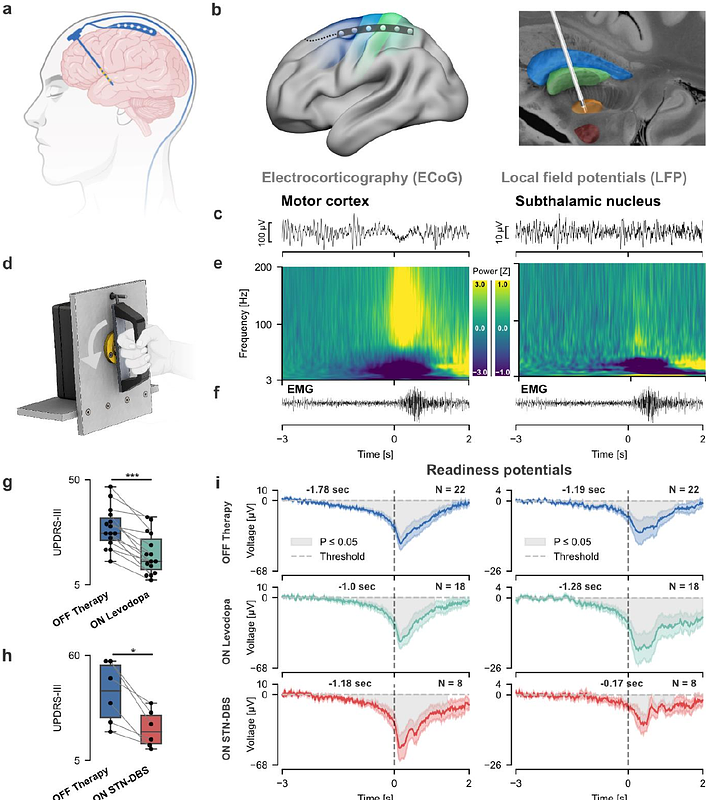Dopamine and neuromodulation shorten the latency from motor intention to execution in Parkinson's disease

Dopamine and neuromodulation shorten the latency from motor intention to execution in Parkinson's disease
Koehler, R. M.; Binns, T. S.; Merk, T.; Zhu, G.; Yin, Z.; Zhao, B.; Chikermane, M.; Vanhoecke, J.; Busch, J. L.; Habets, J.; Faust, K.; Schneider, G.-H.; Haufe, S.; Zhang, J.; Kuehn, A. A.; Haynes, J.-D.; Neumann, W.-J.
AbstractThe ability to initiate movement is fundamental to human behavior. Loss of dopaminergic neurons in Parkinson\'s disease (PD) is associated with impaired movement initiation, also termed akinesia. Dopamine and subthalamic deep brain stimulation (DBS) can alleviate akinesia, but the underlying mechanisms are unknown. We recorded invasive neural activity from both sensorimotor cortex and subthalamic nucleus (STN) in 25 PD patients performing self-initiated movements. Readiness potentials and brain signal decoding revealed long latencies between the neural representation of motor intention and execution. Dopamine and STN-DBS shortened these latencies, while shifting directional cortico-subthalamic oscillatory coupling from antikinetic beta (13-35 Hz) to prokinetic theta (4-10 Hz) rhythms. Our study highlights a key role for dopamine and basal ganglia in the evolution of preparatory brain signals and encoding of motor intention. It further reveals a therapeutic mechanism for acceleration of action initiation through modulation of pathological synchrony that may be leveraged with closed-loop neurostimulation.